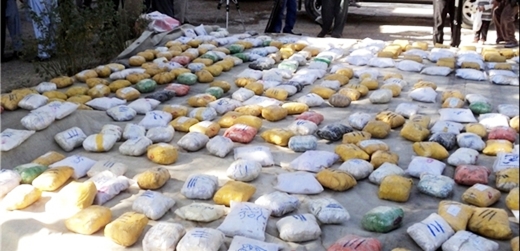Some 240 tons of narcotics was seized in different Iranian provinces between March 21 and July 22, 2015, Deputy Head of Iran’s Anti-Narcotics Headquarters Assadollah Hadinejad said.
The following is the translation of an excerpt of his remarks on the anti-drugs campaign Ettela’at, a daily, published on August 23:
Some 60 percent of imprisonments, 55 percent of divorces and 45 percent of petty larcenies in Iran are drug-related.
Given that Afghanistan is a major narcotics producer and Europe is the main consumer of drugs in the world, Iran is an ideal transit route for drug traffickers operating in these two regions. To stem the Europe-bound flow of narcotics, Iran has taken measures such as the blocking of its eastern borders [with Afghanistan].
Those efforts have curbed drug trafficking through Iran to 35 percent and there is hope that the blocking of the Iran-Pakistan border will send the figure down to 15 percent by March.
The Taliban and Western forces have played a significant role in the increase of drug production in Afghanistan which accounts for up to 90 percent of traditional narcotics in the world.
When US forces were deployed in Afghanistan in 2001, yearly narcotics production stood at no more than 180 tons. The figure had risen to 6,400 tons when they left.
Factors such as support by terrorists, lack of appropriate agricultural infrastructure and enormous investments by drug mafias contribute to narcotics production in Afghanistan
The fight against drug-dealers is among the priorities of the Anti-Narcotics Headquarters.
